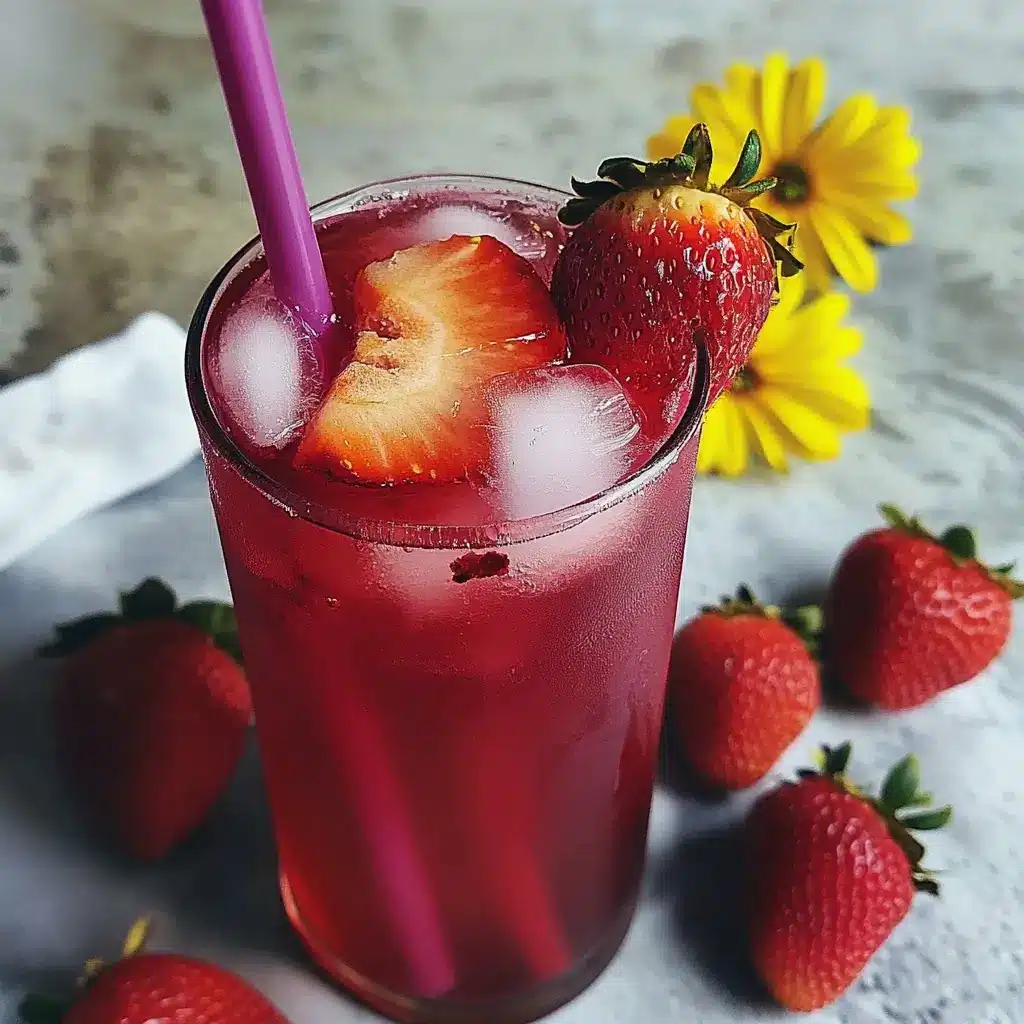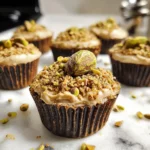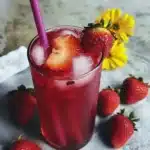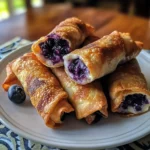This Strawberry Hibiscus Iced Tea isn’t just a beverage in our home; it’s a vibrant signal that warmer, brighter days are here. I first stumbled upon the combination of tart hibiscus and sweet strawberries during a summer fair, and I was instantly captivated. The commercial versions, however, were often too sweet or tasted artificial. That’s what spurred me to create my own. After a few delightful experiments in the kitchen, this recipe was born, and it quickly became a family favorite. My kids, who usually shy away from anything “herbal,” adore the beautiful ruby color and the fruity punch. My husband, a devoted iced tea aficionado, declared it his new go-to for a refreshing afternoon pick-me-up. It’s the perfect balance of floral tartness from the hibiscus and luscious sweetness from ripe strawberries, creating a drink that’s both sophisticated and utterly gulp-able. We now make a large pitcher every weekend during spring and summer, and it rarely lasts more than a day! It’s our little taste of sunshine in a glass, a homemade delight that’s far healthier and more flavorful than anything store-bought.
Ingredients
Crafting this delightful Strawberry Hibiscus Iced Tea requires a handful of simple, yet vibrant ingredients. The quality of each component will significantly impact the final flavor, so try to use the best you can find.
- Dried Hibiscus Flowers: ¼ cup (about 10-15 grams) of loose dried hibiscus calyces, or 6-8 hibiscus tea bags. The dried flowers offer a more potent and authentic flavor, but good quality tea bags are a convenient alternative. Look for hibiscus sabdariffa, which is the variety typically used for tea. Its deep red color is not just visually appealing but also an indicator of its rich antioxidant content.
- Fresh Strawberries: 1 ½ cups (about 250-300 grams) fresh, ripe strawberries, hulled and sliced or roughly chopped. The riper and sweeter the strawberries, the less additional sweetener you’ll need. If strawberries are out of season, frozen ones can be used, though fresh usually provides a brighter flavor.
- Water: 8 cups (approximately 2 liters) of filtered water, divided. Using filtered water is crucial as impurities in tap water can affect the delicate taste of the tea. 4 cups will be used for brewing the hibiscus, and the remaining 4 cups will be cold water for dilution.
- Sweetener: ½ to ¾ cup (100-150 grams) granulated sugar, or to taste. You can also substitute with other sweeteners like honey (about ⅓ to ½ cup), agave nectar (about ⅓ to ½ cup), maple syrup (for a different flavor profile), or a sugar-free alternative like stevia or erythritol according to your preference and dietary needs. The amount will depend on the tartness of your hibiscus and the sweetness of your strawberries.
- Fresh Lemon or Lime Juice (Optional but Recommended): 1-2 tablespoons. This brightens the flavors and adds a lovely citrusy note that complements both the hibiscus and strawberries.
- Fresh Mint Sprigs (Optional, for garnish and subtle flavor): A few sprigs. Mint adds an extra layer of freshness.
- Ice Cubes: Plenty for serving.
The synergy between these ingredients is what makes this tea special. The hibiscus provides a tart, cranberry-like base with floral undertones. The strawberries introduce a natural sweetness and a familiar fruity character that softens the hibiscus’s tart edge. The sweetener balances these elements, while a touch of lemon or lime juice can elevate the entire flavor profile, making it more complex and refreshing.
Instructions
Follow these step-by-step instructions to create a perfect pitcher of Strawberry Hibiscus Iced Tea. The process is straightforward and rewards you with a stunningly delicious beverage.
- Brew the Hibiscus Tea:
- In a medium saucepan, bring 4 cups of filtered water to a rolling boil.
- Once boiling, remove the saucepan from the heat.
- Add the dried hibiscus flowers (or tea bags) to the hot water.
- Stir gently to ensure all the hibiscus is submerged.
- Cover the saucepan and let the hibiscus steep for 8-10 minutes. Avoid over-steeping, as hibiscus can become quite tart or even slightly bitter if left for too long. The water will turn a beautiful deep crimson color.
- Prepare the Strawberry Mixture:
- While the hibiscus tea is steeping, prepare your strawberries. Wash them thoroughly, hull them (remove the green leafy tops), and slice or roughly chop them.
- In a separate bowl, combine the sliced/chopped strawberries with your chosen sweetener (e.g., granulated sugar). If using sugar, gently muddle or mash the strawberries with the sugar using a fork or a muddler. This helps release their juices and allows the sugar to start dissolving, creating a lovely strawberry syrup. If you prefer a smoother tea without fruit bits, you can briefly blend the strawberries with a little water or some of the warm hibiscus tea (once strained) to create a puree.
- If using liquid sweetener like honey or agave, you can add it now or later with the tea.
- Strain the Hibiscus Tea:
- Once the hibiscus has finished steeping, carefully strain the tea through a fine-mesh sieve into a large heatproof pitcher or another bowl. Discard the steeped hibiscus flowers or tea bags. If you want an exceptionally clear tea, you can line the sieve with a cheesecloth or a coffee filter.
- Combine Hibiscus Tea and Strawberry Mixture:
- If you muddled the strawberries with sugar, add this strawberry-sugar mixture directly to the warm strained hibiscus tea in the pitcher. Stir well to ensure the sugar is completely dissolved. The warmth of the tea will help.
- If you pureed the strawberries, stir the puree into the warm hibiscus tea.
- If you’re adding lemon or lime juice, stir it in now. This is also a good time to taste the tea (be careful, it’s still warm!) and adjust sweetness if necessary. It’s easier to dissolve more sugar or blend in more liquid sweetener while the tea is warm. Remember that the tea will taste less sweet once chilled and diluted with ice.
- Dilute and Chill:
- Add the remaining 4 cups of cold filtered water to the pitcher. Stir everything together thoroughly.
- Cover the pitcher and transfer it to the refrigerator. Let the Strawberry Hibiscus Iced Tea chill for at least 2-3 hours, or preferably overnight. Chilling allows the flavors to meld together beautifully and ensures the tea is thoroughly cold for serving.
- Serve:
- Once chilled, give the iced tea a good stir as some strawberry sediment may have settled at the bottom.
- Fill glasses generously with ice cubes.
- Pour the Strawberry Hibiscus Iced Tea over the ice.
- Garnish with fresh strawberry slices, a sprig of mint, or a thin lemon/lime wheel, if desired.
Enjoy your homemade, incredibly refreshing Strawberry Hibiscus Iced Tea!
Nutrition Facts
- Servings: This recipe yields approximately 8 cups (about 2 liters) of iced tea, which equates to about 8 servings of 1 cup (240 ml) each.
- Calories per serving (estimated): Approximately 60-90 calories.
Note on Nutrition: The exact nutritional value will vary based on several factors:
* Amount and Type of Sweetener: Using ¾ cup of sugar will result in higher calories than using ½ cup, or using a zero-calorie sweetener like stevia. Honey and maple syrup have slightly different caloric profiles than granulated sugar.
* Quantity of Strawberries: More strawberries will slightly increase calories and natural sugar content, but also boost vitamins.
General Nutritional Highlights:
- Hibiscus: Naturally calorie-free and caffeine-free. It is known for its high levels of antioxidants, particularly anthocyanins (which give it the red color), and may have benefits for blood pressure and liver health.
- Strawberries: A good source of Vitamin C, manganese, folate, and potassium. They are also rich in antioxidants and beneficial plant compounds.
- Hydration: Iced tea is an excellent way to stay hydrated, especially during warmer months.
This homemade version is generally much lower in sugar and artificial ingredients compared to many commercially available iced teas, making it a healthier choice for a refreshing drink. If you are closely monitoring your sugar intake, opt for minimal sweetener or a natural sugar-free alternative.
Preparation Time
Understanding the time commitment can help you plan when to make this delightful beverage.
- Active Preparation Time: Approximately 15-20 minutes.
- Boiling water: 5-7 minutes.
- Steeping hibiscus: 8-10 minutes.
- Preparing strawberries (washing, hulling, slicing/muddling): 5-7 minutes (can be done while hibiscus steeps).
- Straining and mixing: 3-5 minutes.
- Chilling Time: Minimum 2-3 hours, but ideally 4 hours or overnight.
- This is crucial for the flavors to fully meld and for the tea to become thoroughly cold for the best refreshment.
- Total Time: Approximately 2 hours 20 minutes to 4 hours 20 minutes (or longer if chilling overnight).
While the chilling time seems long, the hands-on work is quite minimal, making this an easy recipe to prepare in advance for gatherings or to have on hand for a refreshing treat.
How to Serve
Serving this Strawberry Hibiscus Iced Tea is an opportunity to enhance its visual appeal and refreshing qualities. Here are some ideas:
- Glassware:
- Tall Collins or Highball Glasses: These classic choices showcase the beautiful ruby color of the tea.
- Mason Jars: For a rustic, casual, or farmhouse-chic presentation. Add a colorful paper straw for extra fun.
- Wine Glasses (Stemless or Regular): Can elevate the drink for a more sophisticated occasion, like a brunch or an evening gathering.
- Large Glass Pitcher: Serve directly from a clear glass pitcher so guests can admire the vibrant hue and any fruit floating within.
- Ice, Ice, Baby:
- Plenty of Standard Ice Cubes: Essential for a truly chilled and refreshing experience.
- Infused Ice Cubes: Make ice cubes with small pieces of strawberry, mint leaves, or even tiny hibiscus flowers frozen inside for an elegant touch that won’t dilute the flavor as much. You can also make ice cubes from a portion of the tea itself.
- Large Ice Spheres or Cubes: These melt slower, leading to less dilution if you plan on sipping slowly.
- Garnishes are Key:
- Fresh Strawberry Slices or Halves: Perch a slice on the rim of the glass or float a few in the drink.
- Fresh Mint Sprigs: A vibrant green sprig adds a pop of color and a hint of fresh aroma. Gently clap the mint between your palms before adding to release its oils.
- Lemon or Lime Wheels/Wedges: A thin slice on the rim or squeezed into the tea adds a zesty kick.
- Edible Flowers (like borage or viola): For an extra special, whimsical touch if you have them available.
- Sugar or Salt Rim (Optional): For a cocktail-like presentation, you can rim the glasses with sugar (or a mix of sugar and a pinch of salt for a sweet-salty contrast, though this is less common for iced tea).
- Serving Occasions:
- Summer Barbecues and Picnics: A crowd-pleasing, non-alcoholic option.
- Brunches: Its beautiful color makes it a festive addition to any brunch spread.
- Poolside or Patio Lounging: The ultimate thirst-quencher on a hot day.
- Afternoon Tea (Iced Version): A refreshing alternative to traditional hot tea.
- Everyday Refreshment: Keep a pitcher in the fridge for a healthy and delicious drink anytime.
- Pairing Suggestions:
- Light summer salads
- Grilled chicken or fish
- Fresh fruit platters
- Light pastries or scones
- Spicy foods (the coolness and slight tartness can be a good contrast)
Remember to stir the pitcher well before each pour, as some natural fruit sediment may settle at the bottom.
Additional Tips
To help you perfect your Strawberry Hibiscus Iced Tea and customize it to your liking, here are five additional tips:
- Master the Sweetness: The “to taste” for sweetener is crucial. Strawberries vary in sweetness, and hibiscus can vary in tartness. Always taste the tea mixture before chilling it completely, but keep in mind that flavors become slightly less pronounced when cold. It’s easier to add more sweetener to the warm or room temperature tea. If it’s too sweet after chilling, a squeeze of extra lemon or lime juice can help balance it, or you can dilute it with a little more plain cold water or unsweetened tea.
- Experiment with Fruit Combinations: While strawberry is classic, don’t be afraid to get creative!
- Raspberry Hibiscus: Raspberries offer a lovely tartness that pairs beautifully with hibiscus.
- Blueberry Hibiscus: Adds a different kind of fruity depth and an even deeper color.
- Peach or Nectarine Hibiscus: For a sweeter, more stone-fruit-forward flavor, especially lovely in late summer. Muddle ripe peaches just like the strawberries.
- Mixed Berry Hibiscus: A medley of your favorite berries can create a complex and delicious brew.
- Make-Ahead & Storage Savvy: This iced tea is perfect for making ahead. Brew it a day before your event or when you want it ready. Store it in an airtight pitcher or container in the refrigerator. It will keep well for 3-5 days. The flavors may continue to meld and can even improve slightly by the second day. If you’ve added fresh fruit pieces directly into the pitcher (not just the juice/puree), it’s best consumed within 2-3 days as the fruit can start to degrade.
- Boost the Flavor Intensity:
- Concentrate Method: Brew a stronger hibiscus tea by using the same amount of hibiscus but only 2-3 cups of hot water. Then, dilute this concentrate with cold water and ice when serving. This also saves fridge space.
- Longer Strawberry Maceration: Allow the strawberries to sit with the sugar (macerate) for a longer period (e.g., 30 minutes to an hour at room temperature, or even longer in the fridge) before adding them to the tea. This draws out more juice and flavor from the berries.
- Don’t Over-Dilute with Ice Initially: Add ice to individual glasses rather than the whole pitcher if it will sit out for a long time, to prevent it from becoming watery.
- Consider a Sparkling Twist: For a festive and bubbly version, prepare the Strawberry Hibiscus tea concentrate as described above (or make the regular recipe but don’t add all the dilution water). When ready to serve, fill glasses with ice, pour the tea about halfway or two-thirds full, and then top with chilled sparkling water, club soda, or even a lemon-lime soda for extra sweetness and fizz. Garnish as usual. This makes for a fantastic party drink or a more celebratory non-alcoholic spritzer.
FAQ Section
Here are answers to some frequently asked questions about making Strawberry Hibiscus Iced Tea:
Q1: Can I use frozen strawberries instead of fresh ones?
A1: Absolutely! Frozen strawberries are a great alternative, especially when fresh strawberries are out of season or more expensive. Thaw them slightly before use – they don’t need to be completely thawed. Muddle or blend them as you would fresh strawberries. Keep in mind that frozen strawberries might release a bit more liquid, which is perfectly fine. The flavor might be slightly less vibrant than peak-season fresh strawberries, but the tea will still be delicious.
Q2: How long will this Strawberry Hibiscus Iced Tea last in the refrigerator?
A2: When stored in an airtight container or pitcher in the refrigerator, the iced tea should stay fresh and flavorful for about 3 to 5 days. If you’ve included whole pieces of muddled fruit in the tea (rather than just the strained juice or puree), it’s best to consume it within 2-3 days, as the fruit pieces might start to soften and change texture. Always give it a good stir before serving, as natural sediment from the fruit can settle.
Q3: Can I make this iced tea sugar-free or with alternative sweeteners?
A3: Yes, definitely. To make it sugar-free, you can omit the sweetener altogether for a more tart and purely fruit-and-floral flavored tea. Alternatively, use natural sugar-free sweeteners like stevia (liquid or powdered), erythritol, or monk fruit sweetener. Start with a small amount and adjust to your taste, as these sweeteners can be much more potent than sugar. You can also use liquid sweeteners like honey or agave nectar; just be mindful that they will add their own subtle flavor notes to the tea and adjust quantities accordingly (they are generally sweeter than sugar, so you might need less).
Q4: Can I serve this Strawberry Hibiscus tea hot?
A4: Yes, you can enjoy a warm version of this beverage. Prepare the hibiscus tea and strawberry mixture as directed. Instead of diluting with cold water and chilling, combine the hot hibiscus tea with the sweetened strawberry mixture. You might want to use less overall water for a more concentrated warm drink, or serve it in mugs. A warm Strawberry Hibiscus tea can be very comforting, especially on a cooler day. You might also find you need less sweetener in a hot beverage compared to a cold one.
Q5: What can I use if I don’t have dried hibiscus flowers or hibiscus tea bags?
A5: While hibiscus has a unique tart and floral flavor that’s central to this recipe, you can try other herbal teas if you can’t find it. Good substitutes that would complement strawberries include:
* Rosehip Tea: Offers a similar tartness and red hue.
* Berry Blend Herbal Teas: (e.g., raspberry zinger, mixed berry) These often contain hibiscus already or have complementary fruity notes.
* Red Rooibos Tea: For a caffeine-free, milder, slightly sweet, and earthy base. The color will be reddish-brown.
* Black or Green Tea: If you don’t mind caffeine, a light black tea (like Ceylon) or a delicate green tea could work, but be mindful of steeping times to avoid bitterness. The flavor profile will be significantly different but can still be enjoyable with strawberries.
Adjust sweetness and other flavorings as needed, as the base tea will change the overall taste.





